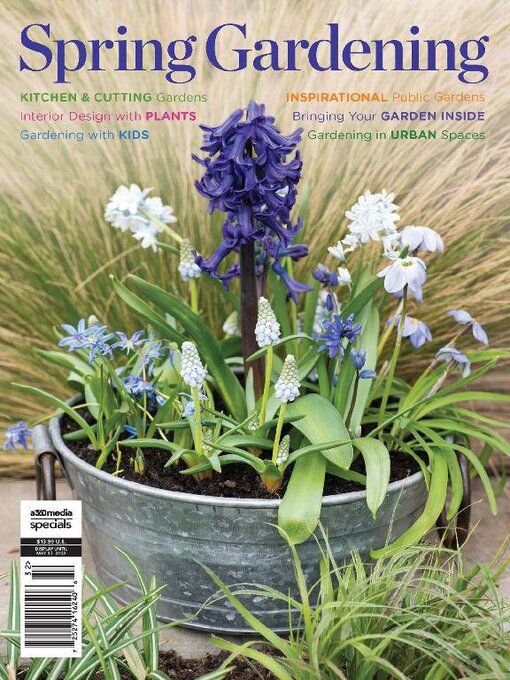As winter thaws, green thumbs everywhere are dreaming about colorful blooms and aromatic herbs, shade-loving ferns, tomato plants soaking up the sunshine, and growing plans for pollinators. Spring Gardening has inspiration for gardeners everywhere, including urban spaces, community gardens, your back and side yards, and terraces full of pots. Learn about the history of famous artists’ gardens and enjoy the imagery from some of the most well-known botanical gardens in the country. Pull on your boots and gloves! It’s time to get to work . . . in the garden!
Spring Gardening
Gardens Are for Everyone … • … And anyone can garden.
Joyful Kitchen Gardens • The flavor and crunch of straight-from-the-garden-to-the-grill sweet corn, butter dripping down your fingers—that is pure joy. The look on a three-year-old’s face when she tastes her first homegrown strawberry—what could be more joyful? Growing your own food is one of the best things you can do for yourself and your family.
Let’s Get Nerdy about Dirt! • Great soil is the foundation for a great garden. It teems with life: one teaspoon of garden soil may contain billions of microorganisms that support the growth of plants. Bacteria and fungi turn trash (dead plant matter) into treasure (nutrients that living plants can use). Algae, nematodes, insects, earthworms and even mammals live, eat and poop in soil, enriching and aerating it.
Tomatoes, America’s Favorite Crop • Is there anything better than a tomato picked fresh from the garden on a hot summer day? How many foods are so delicious and good for you, too? Tomatoes are low in calories (18 for a small tomato) and high in nutrition (antioxidants, lycopene, vitamin C, potassium, vitamin K and folate). It’s no wonder they are America’s favorite garden crop.
Gardening in Raised Beds • Soaring in popularity today, raised garden beds—that is, piles of soil and compost contained by planks or stone or…something else—are not a modern invention. In 18th-century Parisian markets, produce sellers took advantage of ample manure on city streets to build up fertile growing beds. Before that, medieval farmers lined beds with wattle (rods and stakes interlaced with twigs and branches), and long before that, pre-Inca farmers of South America grew crops in raised beds surrounded by canals. Even the engineers of Babylon’s Hanging Gardens probably employed raised beds. Good ideas tend to stick around!
Inspirational Public Gardens • “Lungs of the city”—that’s what Frederick Law Olmsted, the landscape architect behind New York’s Central Park, designed the park to be. Olmstead wanted green spaces, forests and designed plantings to enable the city and its residents to breathe.
Landscaping with Succulents & Cacti • Fascination with succulents and cacti goes beyond containers on windowsills—desert plants have a solid place in landscaping, too. Designers and homeowners alike are using these plants more and more to create stunning gardens that are drought-tolerant and low-maintenance.
Herb Gardens to Love • For millennia, humans have found room in their gardens for herbs. Egyptian and Asian gardeners grew herbs for medicines; medieval Europeans sowed culinary plants along with medicinal ones; herb gardens of the 17th and 18th century were often points of pride, handsome outdoor rooms that also delivered seasonings and cures. Today’s gardeners grow herbs for all of these reasons and more.
Gardening with Deer • Anyone who gardens in deer country has heard this from visitors: “Oh, look at all the deer! Aren’t they beautiful!” There is no question that the deer are beautiful. They also pull up expensive plants or eat them right down to the ground, strip rose bushes of the most prized blossoms, trample vegetable gardens and knock down small trees by scraping antlers against them. Most gardeners would prefer to...
